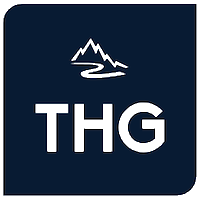5 Competencies of an Adaptive Leader
Introduction to Adaptive Leadership
The ideas and practices surrounding adaptive leadership have been advanced in large part by Ron Heifetz and Marty Linsky in the books “Leadership without Easy Answers” and “Leadership on the Line” and more recently with the help of Alexander Grashow in the book “The Practice of Adaptive Leadership”. This introduction, and the upcoming blog entries, will draw in large part from the work of these three subject matter experts.
What is Adaptive Leadership?
Heifetz et al believe that leadership is, at its essence, about influencing change that builds and enables the capacity of individuals and organizations to thrive. Specifically, that leadership is the practice of mobilizing groups of people to tackle tough challenges and thrive. The bottom line is that leaders need to understand the importance of adaptation and are able to employ the relevant processes and tools to build the adaptive capacity of organizations.
What does it mean to be adaptive?
The word “adaptive” in adaptive leadership is drawn from evolutionary biology and refers to the process that organisms follow if they are going to survive and thrive. The three components of this process (applied to organizations) are to 1) preserve the organizational elements necessary for survival, 2) remove (or modify) the elements that are no longer necessary or useful, and 3) create (aka innovate) new arrangements that enable the organization to thrive.
What does it mean to thrive?
In adaptive leadership, to thrive is to develop new capabilities and strategies to address changes in the environment (e.g. industry) and realize strategic vision and goals. The key for an adaptive leader is to understand what it means for a specific organization to thrive, and then help make that happen. To thrive is to successfully adapt to circumstances, make desired changes, and stay anchored to what is best about the organization in the process. This requires an appreciation for the core values, purposes (whether explicit or implicit), and the history of the organization.
What are Adaptive Leadership competencies?
The adaptive leadership approach views leadership more as a process than a set of competencies. Having said this, the following are some skills, attitudes, and implied qualities that align with adaptive leadership.
The adaptive leader needs to be able to connect organizational change to the core values, capabilities, and dreams of the relevant stakeholders
The adaptive leader seeks to foster a culture that collects and honors diversity of opinion and uses this collective knowledge for the good of the organization
The adaptive leader knows that change and learning can be painful for people, and is able to anticipate and counteract any reluctant behavior related to the pain
The adaptive leader understands that large-scale change is an incremental process and that he/she needs to be persistent and willing to withstand pressure to take shortcuts
What is the theory that informs adaptive leadership?
The theory that informs adaptive leadership appears to be more about the nature of organizations than about the nature of leadership. In the writings of Heifetz et al, the clearest theoretical underpinning is the speculation that organizations adhere to the same processes outlined in evolutionary biology. It is the task of the leader to understand this theoretical framework (metaphor?) and use it to guide and strengthen the organization. If you are familiar with adaptive leadership, let me know if you agree or disagree with this notion that its theoretical focus is on organizations rather than on leadership.
